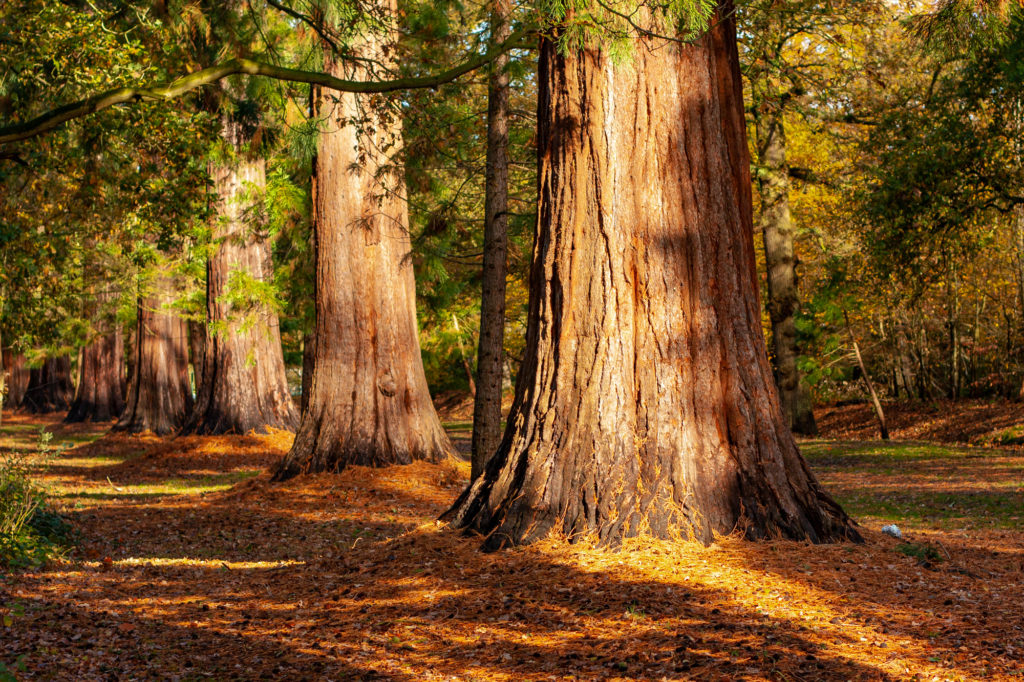It seems I was wrong about how sunflowers transport their water to the tip of the plant. I have just read that science doesn’t really know how a tree transports water from the soil to the crowns of trees. Ask yourself the simple question I forgot to ask: how does the world famous redwood called Hyperion get water to its crown 115 m above the ground? It must be properly hydrated given that it’s over 900 years old.

Curious to see a redwood? Here’s a website dedicated to the redwoods of the British Isles.
It’s a question I should have considered because I once climbed the Gloucester Tree, a retired fire lookout tree. It was chosen as the tallest of many within the karri forest in Pemberton, Western Australia. Karri are one species of the many native Australian gum trees that tend to be call eucalypts when planted overseas. They are slow growing and evergreen and flower after fire. The Gloucester Tree was a tough climb up some 53 metres to a tree house that swayed not so gently in the light breeze. Fire prevention was the theme of the climb and water was never far from our minds. The verdant yet reflective canopy stretched to the horizon in all directions. It was like a green cloud composed of water stiffened leaves. We did wonder how trees moved water 50 metres to keep the canopy hydrated. And I had completely forgotten about that question until I was reading about trees today.
There are so many other things that we don’t fully comprehend about trees.
‘Every year, a live tree adds a growth ring to the wood in its trunk because it is, you could say, damned to grow whether it wants to or not. In the growing season, the cambium, that narrow layer of clear cells between the bark and the wood, grows new woody cells on the inside and new bark cells on the outside. If a tree cannot increase its girth, it dies. At least, that is what we thought for a long time. Then researchers noticed pines in Switzerland that looked outwardly healthy and were covered in green needles. On closer inspection-either by cutting the trees down or taking core samples-researchers discovered that a few of them hadn’t created a single new growth ring for more than 30 years. Dead pines covered in green needles? The trees had been attacked by an aggressive fungus called and annosus root rot, and their cambium had a died. The roots were still pumping water up to the crown through the long narrow transport vessels in the trunk, providing the needles with life-giving moisture. And the roots themselves? When the cambium is dead, the bark is too, which means the tree can no longer pump sugar solutions from its needles back down to its roots. Therefore, healthy neighbouring pines must have been helping their dying comrades by supplying their roots with food…’
I’ll bet you have noticed that giant redwoods aren’t such giants in Europe. They never get as tall as they do in their home forests. In Europe, they tend to be trophy trees adorning parks and demesnes, like the examples in Langley Park near where I once lived in the UK. They are typically planted apart from one another. Aesthetically distanced from their parents and their siblings, their trunks are often as thick as those of their distant forbears but they just don’t grow anything like as tall.
The forester Peter Wohlleben has a very plausible explanation in his wonderful 2015 book The Hidden Lives of Trees. It really is a wonderful book. Starting with the dust jacket which leads the prospective reader into the mysteries of the lives of trees with the sub-title ‘What They Feel, How They Communicate’.
The book is comprised of 36 chapters and each had a surprise for me.
I’ve already spoiled one surprise. And with that surprise, I think you can guess why redwoods might be so stunted in Europe:
‘… the little Americans have had to fend for themselves. No mother to nurse them or keep a strict eye out to make sure the little ones didn’t grow too quickly. No cosy, calm, moist forest around them. Nothing but solitude.’
I’m beginning to think Tolkien’s Ent character Treebeard wasn’t so fanciful after all. After all, we’re so respectful of some trees that we’ve given them names like Gloucester and Hyperion. Perhaps one day we’ll learn what they call themselves when we learn to communicate with them.
Next year, I intend to plant sunflowers clustered in groups now that I suspect family life is as important to them as it appears to be for our trees.

Leave a Reply